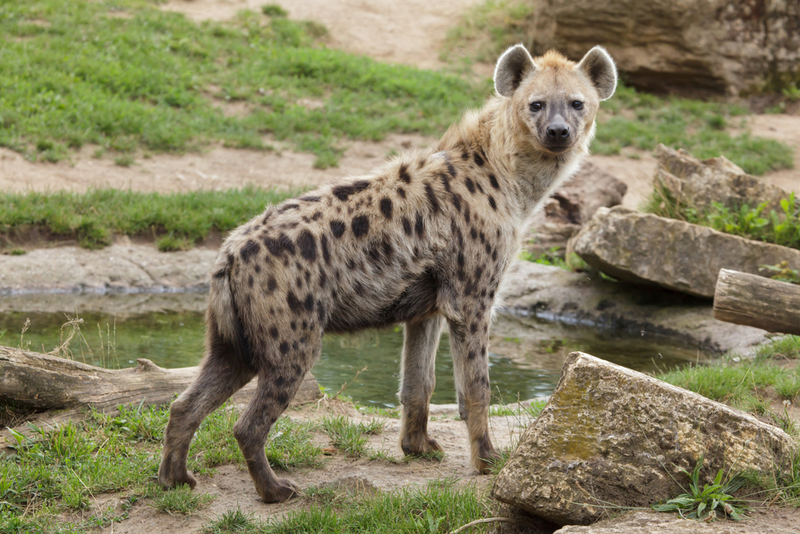Hyenas are often depicted as cowardly creatures, like the carrion-eating villains from “The Lion King.” Though you might not fall in love with these sly nocturnal beasts, it’s difficult not to appreciate them for their unique qualities.
Hyenas don’t just laugh for fun; scientists and naturalists say that the pitch and note frequency or tone of a hyena’s laugh serves as an indication of its age and social status.
The size of any animal’s frontal cortex is thought to be connected to its social intelligence, and hyenas have a frontal cortex similar to that of primates. A study by Duke University showed that a captive pair of hyenas performed even better at problem-solving and social cooperation than chimpanzees. Even more impressive is that during their research, the hyenas solved all the problems in silence, using only non-verbal signals for communication.

Hyena cubs begin to eat meat from near the den at about five months, but they are usually suckled for as long as 12 to 18 months, an unusually long time for carnivores. At around two years, the cubs are considered mature and ready to leave their mother.
Female spotted hyenas are more aggressive and even more muscular than their male counterparts. This is because the females have more testosterone in their bodies, three times as much to be exact. As a result, spotted hyena packs are matriarchal, even baby girl cubs rule over the boys.
There are many myths and legends about hyenas. In Tanzania and India, some legends hold witches ride hyenas. An Ethiopian folk religion talks of people who possess the evil eye and can change themselves into hyenas. During the Middle Ages, hyenas were believed to dig up and consume the bodies of the dead; but it’s worth noting that they do nothing of the sort.